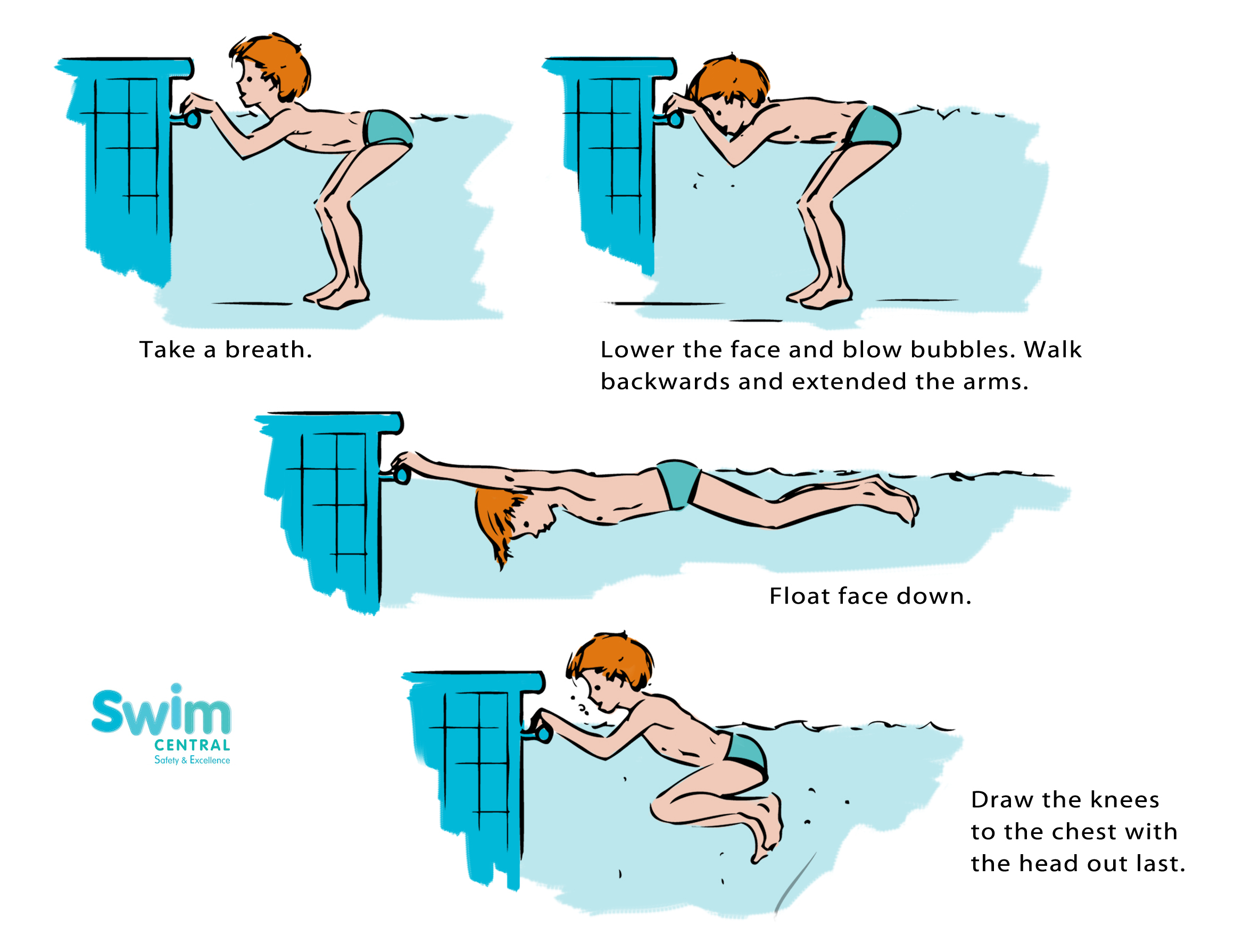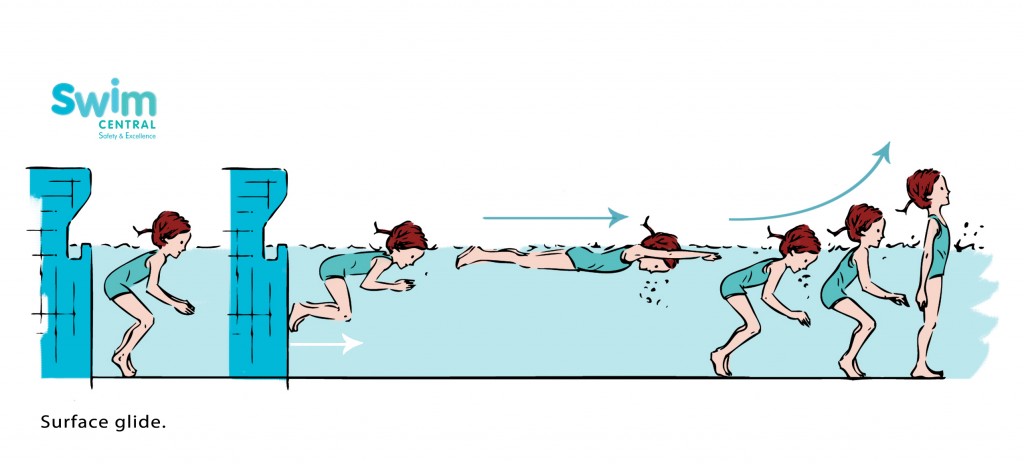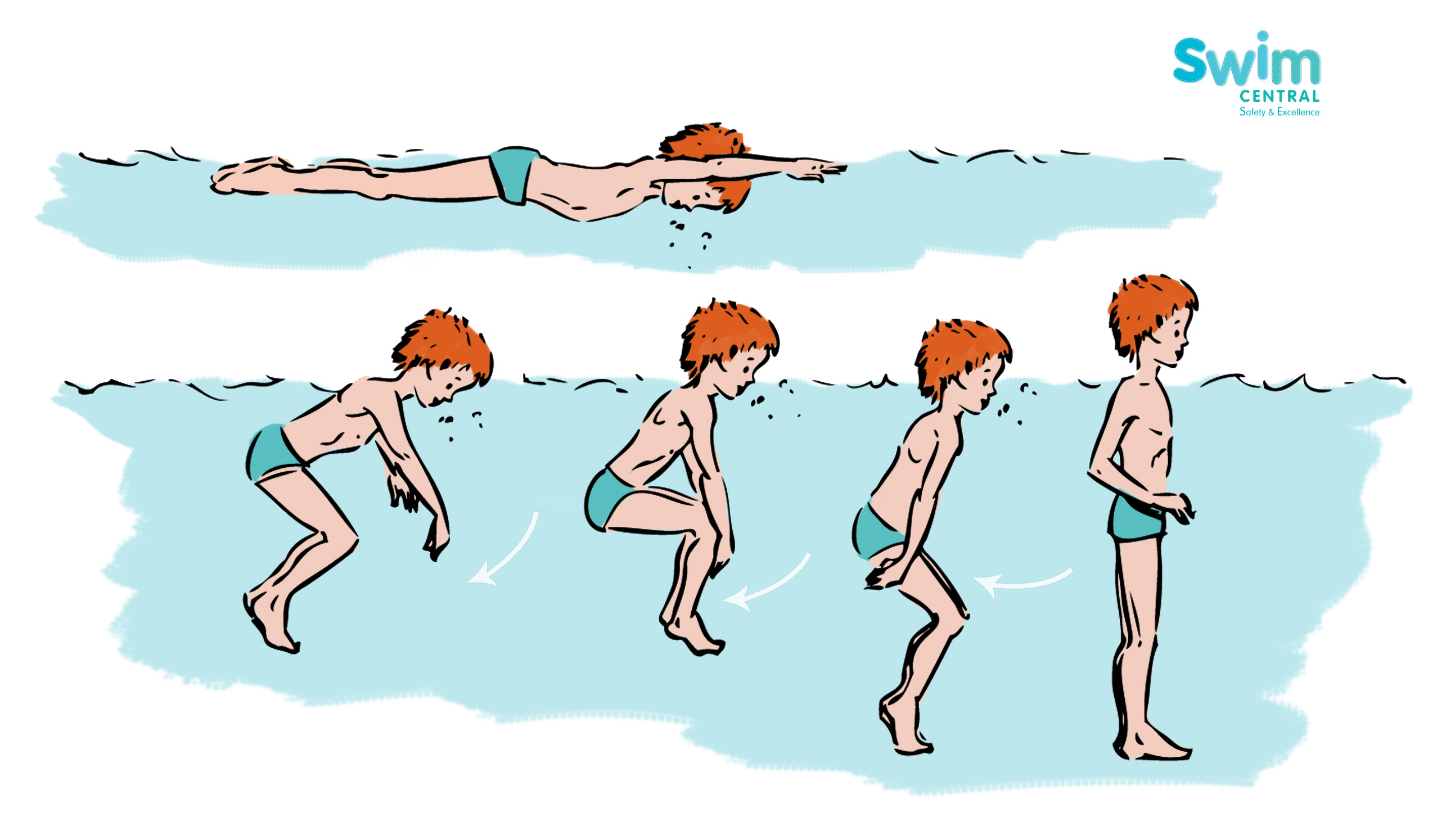The best way to start
As for all strokes really, the first place to start is with a ‘push and glide’ through the water. To achieve this, you’ll need to be able to:
- Understand your own buoyancy
- Happily move away from the wall/floor and let the water support you
- Place your face in the water
A push with the feet from a wall or floor will propel the swimmer forwards.
Here’s our guide to a push and glide!
- Feet on the floor with knees bent or feet flat against a wall. You can hold onto the wall with one hand for support if you like.
- Breathe in and place your face in the water
- Stretch both hands out in front of you, making a triangle.
…and at the same time…
- Push off with your feet, straighten out legs
- Hold that position for as long as you can and ENJOY your glide!
How to stop…
- Push down on the water with your hands and lift your head
….and at the same time…
- Bring your knees up to your chest
- Feet flat on the floor
- Pat yourself on the back, well done!
For some beginners
This can be a daunting task. It means letting go of the side and relying on the water to support you. Practicing will bring success; lots of encouragement and support will guarantee it.
Too tricky? Have a go at this…

Try holding onto the side, placing your face in the water and just allow your feet to come up to the surface. Practice this a number of times until you start to feel confident.
Practicing with children?
- Glide together to start with.
- Glide a short distance towards the wall.
They will feel more comfortable. Just think how you’d feel if you had to venture out into a large expanse of water on your own! Show them the goal to begin with and you’ll find them much happier to try this technique!
What to look for:
- Spine should be flat with face in the water up to the hairline.
- Arms should be straight and hands joined at the top in a ‘rocket’ shape. Fingers extended.
- Legs should be straight, not bent at the knee and toes pointed.
Correcting common problems:
If the swimmer is nervous, you’ll see them quickly flick their heads back as they come up. You’ll see tension in their body as they hold themselves rigid in the water. They will be more likely to cling to you.
If this happens:
- go back a few steps until they are confident
- practice putting faces in the water until this action becomes more familiar
- go back to gliding to the wall together
- try shortening the distance of the glide




